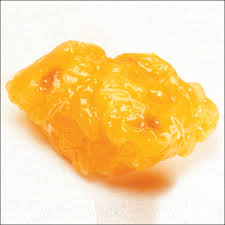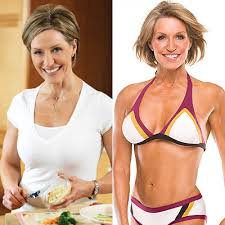
Having spent the last few weeks traveling with friends and family, its easy to see how hard maintaining one's waistline can be. Everyone seems to be aware of or fighting off a bulging belly. Since some of us are not spring chickens, expanding waistlines are early chapters in the book of deadly lifestyle diseases. My niece, friend and husband seem to have gotten the message: a fat belly will kill you.

Fat in the lower body and that lies under the skin (subcutaneous), while unappealing, is not very harmful. The fat in the belly is alive metabolically, producing hormones and behaving more like an endocrine gland. Abdominal fat, also known as visceral fat, wreaks havoc in the liver and other systems, decreasing insulin sensitivity and raising triglycerides, blood pressure and inflammation.

The health risks associated with excess abdominal fat include high blood pressure, diabetes, heart disease, stroke and some cancers. It is simple to assess your risk factor - measure your waist. A measurement of 31 1/2 in for women and 37 in for men indicates visceral fat . Women with 35 in and men with 40 in waistlines are edging into the dangers of metabolic syndrome.
Here is what I've learned about fat bellies...
Stress - Sleeplessness - High Fat/High Sugar - Cortisol = FAT
In the Schwarzbein Principle and Adrenal Fatigue, I learned how damaging the hormone cortisol can be when out of balance in the endocrine system. Cortisol is excreted by the adrenals as a stress response. There is a daily cycle of cortisol levels dropping at night and rising in morning. When we are stressed, not sleeping and consuming low energy dense foods, cortisol levels remain high. Along with suppressing our immunity, the cortisol can trigger fat production and storage in the belly region.
While raised cortisol levels create a desire for fatty and sugary foods, eating them merely further enables the process of deadly fat. A lack of sleep causes weight gain with cortisol being the culprit and sleeplessness increases the appetite. The worst offender may be waiting long periods between meals or skipping meals entirely. Without breakfast, cortisol levels cannot lower, your immunity levels cannot rise and you cause a cascade of effects in the body which only further the fatigue, stress, illness and desire for the least nutritious of foods.
The best defense is to establish or maintain stress management practices, get plenty of sleep and eat nutritious foods on a regular schedule.

The Belly Cannot Be Spot Reduced
As you maybe able to see from the diagram above, muscles have nothing to do with the surrounding fat. To rid yourself of fat, you have to eat properly and be active. You have to deplete the body's raw materials for making fat by not eating them. You have to encourage the body to burn the fat as fuel with aerobic exercise or interval training. You have to ensure the body continues to burn fat at rest with resistance and weight training.
Losing body fat is somewhat based on genetics, sex and body type. A pear shape finds it easier to lose belly fat than lower body fat. Males lose it faster than females. Focusing on muscle groups such as my niece did with sit ups, will shape and strengthen the underlying muscle, but she will have to "reveal" those muscle with movements and diet that rid the fat that overlays her ab muscles. My friend will find she is able to get rid of her belly more efficiently as she builds muscle, since muscles help to build a negative energy balance which results in overall fat and weight loss. Recent test results shows Doug is in a healthy waistline range and his diet and exercise program are effectively reducing his body fat.

About That Fat
1 pound of fat or adipose tissue equals 3500 calories. So to lose that 1 lb of fat, you have to burn up 3500 calories. To get the body to use those fat stores, you have to get physical and that means utilizing oxygen to burn fat as well as carbohydrates.
Yoga burns about 200 calories, pilates about 300, it's about 100 calories per mile jogged or on cardio machine. If my yoga and pilates doesn't keep my heart rate up, labor my breath and make me sweat, I haven't begun to make a dent in that lb of fat. I'll burn carbs but not fat.
I read recently that we overestimate how much we exercise (and the calories we expend) and underestimate how many calories we eat. When I look at the numbers above, I don't want to believe that I can undo a Pilates session with a half cup of ice cream. It gets a whole lot worse than that. Let me give you an example.
A few of us went to Cheesecake Factory after seeing Iron Man 2. That meal ends up being a great lesson - about never eating out again. I couldn't find the ribeye with spinach numbers, the dish Doug and I shared, but a Hibachi Steak is 1533 calories. The Louisiana Chicken Pasta is 1192 calories and the Orange Chicken is 1791 calories. The Lemon Raspberry cheesecake comes in at 734 and glasses of wine were about 100. Everybody split their portions and we shared dessert but per person, our calorie intake still averaged somewhere in the neighborhood of 1039 calories. Over 50% of our daily calorie allotment. That's THREE to FOUR exercise sessions for ONE meal. Or ONE THIRD pound of fat courtesy of CF.
Yikes! I am grateful that I did my interval training before the movie and dinner but dismayed that I didn't catch up until Monday. Which brings me to...
 "90% is diet, 10 % is exercise" - Tosca Reno
"90% is diet, 10 % is exercise" - Tosca RenoWhen you first read this declaration, you have to wonder if it's really true. It sounds like a great principle for slacking off exercise wise. But after adding up the calories in our Cheesecake Factory outing, it doesn't seem so implausible. What is hard to get my head around is how quickly you can undo a week or a month of physical discipline by what you consume. Slacking off isn't exactly what comes to mind after discovering I ate a 1039 calorie meal.
If you have read previous posts, you already know of my commitment to clean and whole eating. This post is about reducing belly fat so the very least I can suggest is to get your calories aligned with your energy expenditures. I'm not even talking yet about a calorie deficit and weight loss. Just eating what we need of clean, whole foods to serve our activity needs.
We already know the processed and packaged candy, chips, cola, cookies and cakes are making us fat. Foods such as these are cheap to buy but expensive when deducted in the health account. That piece of cheesecake wasn't that damn good. Certainly not good enough to negate an interval session and improve my risk of a heart attack or stroke.
The second thing I want to suggest is applying interval training models to your current exercise program. No matter what type of exercise you are doing, you can establish periods of maximum effort with recovery phases. I use a variety of timing situations that depend on the type of exercise I'm doing. Typically, I do 30 seconds of effort to 10-15 seconds active rest, which gets repeated until the exercise session is complete. The benefits include a boosted metabolism, shorter workouts and tangible results in fat loss. Research interval training and follow up with your doctor and fitness professionals to develop a workable program for you.

My niece, friend and husband are all at different stages in their quest to be in the best shape they can be. My niece helps me remember balance. My friend keeps fresh for me how difficult it can be to initiate then follow through on a healthy lifestyle change. My husband gives me friendly competition as we grow ageless together.
Body fat, particularly visceral fat, is something we should not get complacent with. It is a "flag up the pole", a precursor of the illness and disease to come. Praise to those that can inspire us to eat intelligently and use our bodies.
"Your body fat is like one organ, located throughout your body." - English Sabla

No comments:
Post a Comment